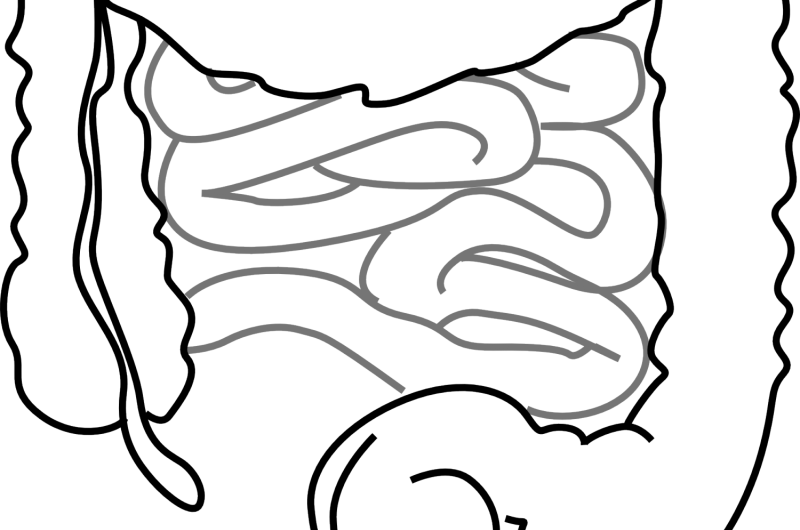Gut communicates with the entire brain through cross-talking neurons

You know that feeling in your gut? We think of it as an innate intuition that sparks deep in the belly and helps guide our actions, if we let it. It's also a metaphor for what scientists call the "gut-brain axis," a biological reality in which the gut and its microbial inhabitants send signals to the brain, and vice versa.
It's not a surprise that the brain responds to signals in the gut, initiating motor functions involved with digestion. Directed by the brainstem, these types of basic biological actions are largely automatic. But what if the higher brain—the thinking, emotional centers—were influenced by signals in the gut, too? New University of Illinois research in rats shows the entire brain responds to the gut, specifically the small intestine, through neuronal connections.
To map the connections, researchers inserted neuron-loving viruses in the rats' small intestines and traced the viruses as they moved from neuron to neuron along the Vagus and spinal nerves and throughout the brain. The idea was virus movement mimicked the movement of normal signals through neurons from the gut to the brain and back.
"We saw a lot of connections in the brainstem and hindbrain regions. We knew these regions are involved in sensing and controlling the organs of the body, so there weren't any big surprises there. But things got more interesting as the viruses moved farther up into parts of the brain that are usually considered emotional centers or learning centers, cognitive places. They have all these multifaceted functions. So thinking about how information from the small intestine might be nudging those processes a little bit is really cool," says Coltan Parker, doctoral student in the Neuroscience Program at Illinois and lead author on a study published in Autonomic Neuroscience: Basic and Clinical.
The study represents the first complete map of neuronal connections between the small intestine—what Parker and his co-authors call an "underloved" part of the digestive system—and the entire brain. The involvement of cognitive and emotional centers hints at how the thinking brain sometimes overrides our feeling of being full, provides fodder to explore relationships between depression and digestive troubles, and more.
"Now we're actually finding the neuro-anatomy that might be involved in that 'feeling in your gut,'" says Megan Dailey, study co-author and program administrator in the College of Agricultural, Consumer and Environmental Sciences at Illinois.
In addition to showing just how extensive the connections are between the small intestine and the brain, the study uncovered a rarely documented feature of the neurons themselves.
Scientists have long assumed sensations from the gut, or anywhere in the body, traveled to the brain along one set of neurons (the sensory neurons), with instructions from the brain traveling back along a separate set of neurons (the motor neurons). But in their mapping study, Illinois researchers discovered some of the neurons—about half—were transmitting both sensory and motor signals.
They were capable of cross-talk within the same neuron.
"From the cortex to the brainstem, in pretty much every region we investigated, there was that 50% overlap of sensory-motor signals. It was throughout the brain, consistently," says study co-author Elizabeth Davis. Davis is a 2018 graduate of the Illinois Neuroscience Program and is currently studying as a postdoctoral scholar at the University of Southern California.
The same pattern—50% of neurons having both sensory and motor signaling capabilities—had only been shown one other time, in a study mapping neuronal connections between fat tissue and the brain. The researchers point out new evidence of the same crosstalk pattern could suggest a general architecture of neuronal networks between the body and brain.
"This study shows that sensorimotor feedback loops are abundant across all levels of the brain. Up until now, it has really been unknown how information in the small intestine, about nutrients or anything else, can get up to the brain and affect cognitive-emotional processes, and then how those processes can come back down and affect the gut," Parker says. "With more research, we may finally begin to understand how hunger makes us 'hangry,' or how a stressful day becomes an irritable bowel."
The article, "Central sensory-motor crosstalk in the neural gut-brain axis," is published in Autonomic Neuroscience: Basic and Clinical.
More information: Coltan G. Parker et al, Central sensory-motor crosstalk in the neural gut-brain axis, Autonomic Neuroscience (2020). DOI: 10.1016/j.autneu.2020.102656




















